Upgrading your gear and learning how to trade are some of the most important parts of Path of Exile 2. No matter if you are trying to push the power of your character, refine your setup for harder challenges, or make the most of what you have got, understanding these systems is important and a big part of the game. This guide will break it all down for you – without overloading you with unnecessary information – so you can focus on what actually matters.
Upgrading Gear
Let us start with the basics: in Path of Exile 2, upgrading gear is not just about adding new stats and hoping for the best. It is all about making calculated decisions on when to invest and when to hold back.
Understanding Item Rarities
Here is a quick summary of item rarities and why they matter:
- Normal (White): Basic items with no modifiers. Good for crafting but not for much else.
- Magic (Blue): Up to two modifiers. Great for early upgrades when you are just starting out.
- Rare (Yellow): Up to six modifiers (three prefixes, three suffixes). These are your bread and butter for customization.
- Unique (Orange): Fixed modifiers that can completely change how you play. Sometimes game-changing, sometimes niche.

The Currencies You Will Use
Upgrading gear requires crafting materials. Here are the main ones you will be using:
- Orbs:
- Orb of Transmutation: Turns a Normal item into Magic. Simple, but effective.
- Orb of Alchemy: Upgrades a Normal item straight to Rare.
- Exalted Orb: Adds a random modifier to a Rare item. Think of it like a wild card.
- Vaal Orb: Corrupts an item, which can result in massive gains – or leave you frustrated in a corner.
- Essences: These let you upgrade an item while guaranteeing a specific type of modifier. Great if you know exactly what you need.
- Quality Upgrades:
- Blacksmith’s Whetstone: Boosts weapon quality (more damage).
- Armourer’s Scrap: Improves armor quality (better defenses).
- Gemcutter’s Prism: Improves the quality of Skill Gems.
Recombination Crafting
Once unlocked during Expeditions, you can use Recombination to attempt combining the best modifiers from two Rare items into a new one. This is a powerful endgame crafting system that requires Verisium Artifacts and comes with a risk: if the recombination fails, both items are destroyed.
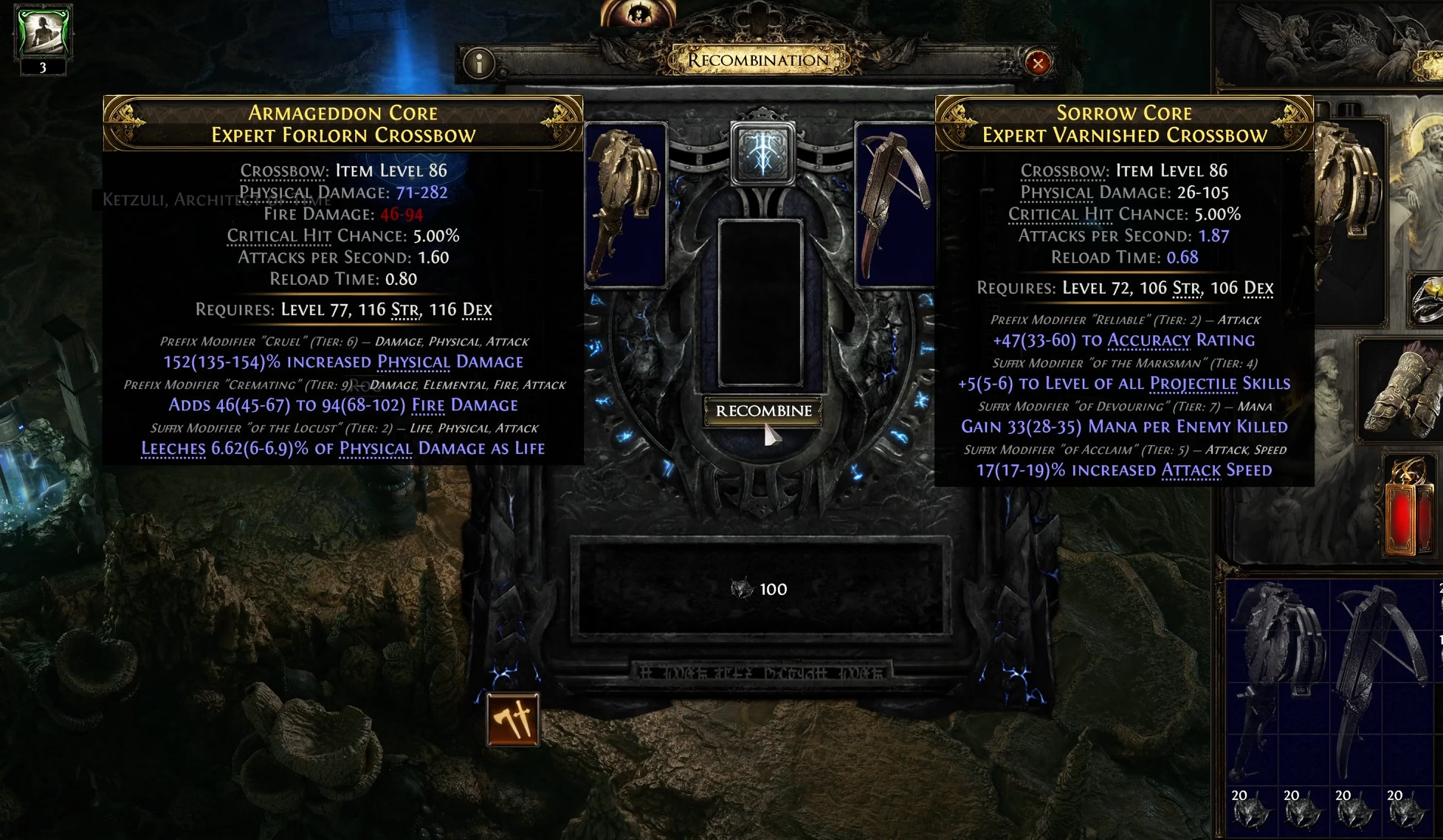
Sockets and Runes
In PoE2, sockets hold Runes, which are your go-to for extra bonuses. Here is what you should know:
- Adding Sockets: If your gear does not have enough sockets, use Artificer’s Orbs to add more.
- Runes: These slot into your gear for extra stats. Choose wisely, because once a rune is in, you cannot take it out!
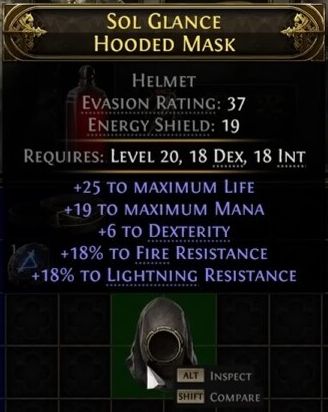
Tip: Do not waste sockets and runes on leveling gear unless you are struggling to progress. Save them for Endgame gear instead!
Disenchanting and Salvaging
Not every item you find is worth upgrading. That is where disenchanting and salvaging come in:
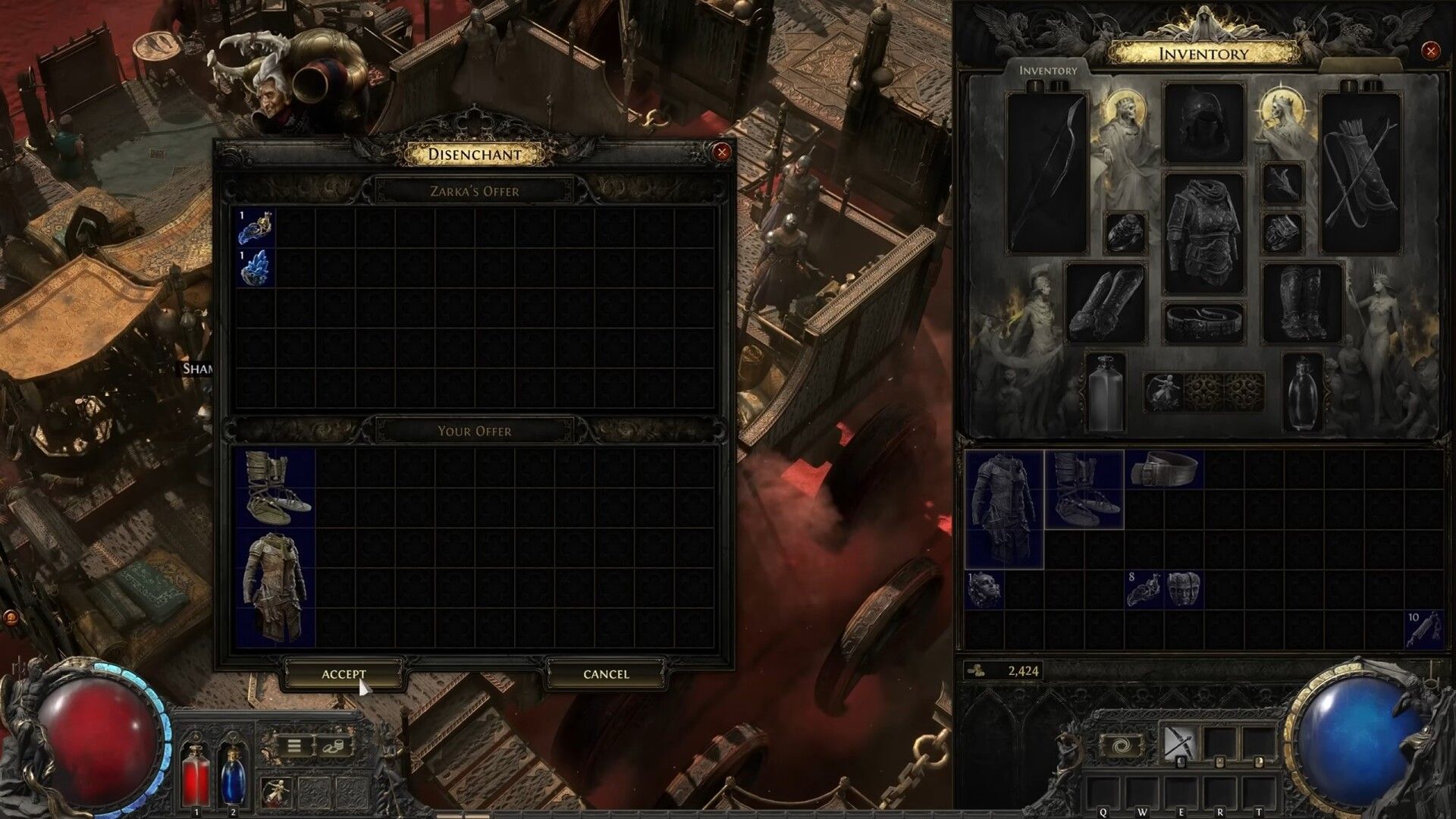
- Disenchanting: Break down Magic or Rare items for crafting materials. Easy and efficient.
- Salvaging: Use the Salvage Bench to convert quality-enhanced gear into useful resources like Armourer’s Scraps.
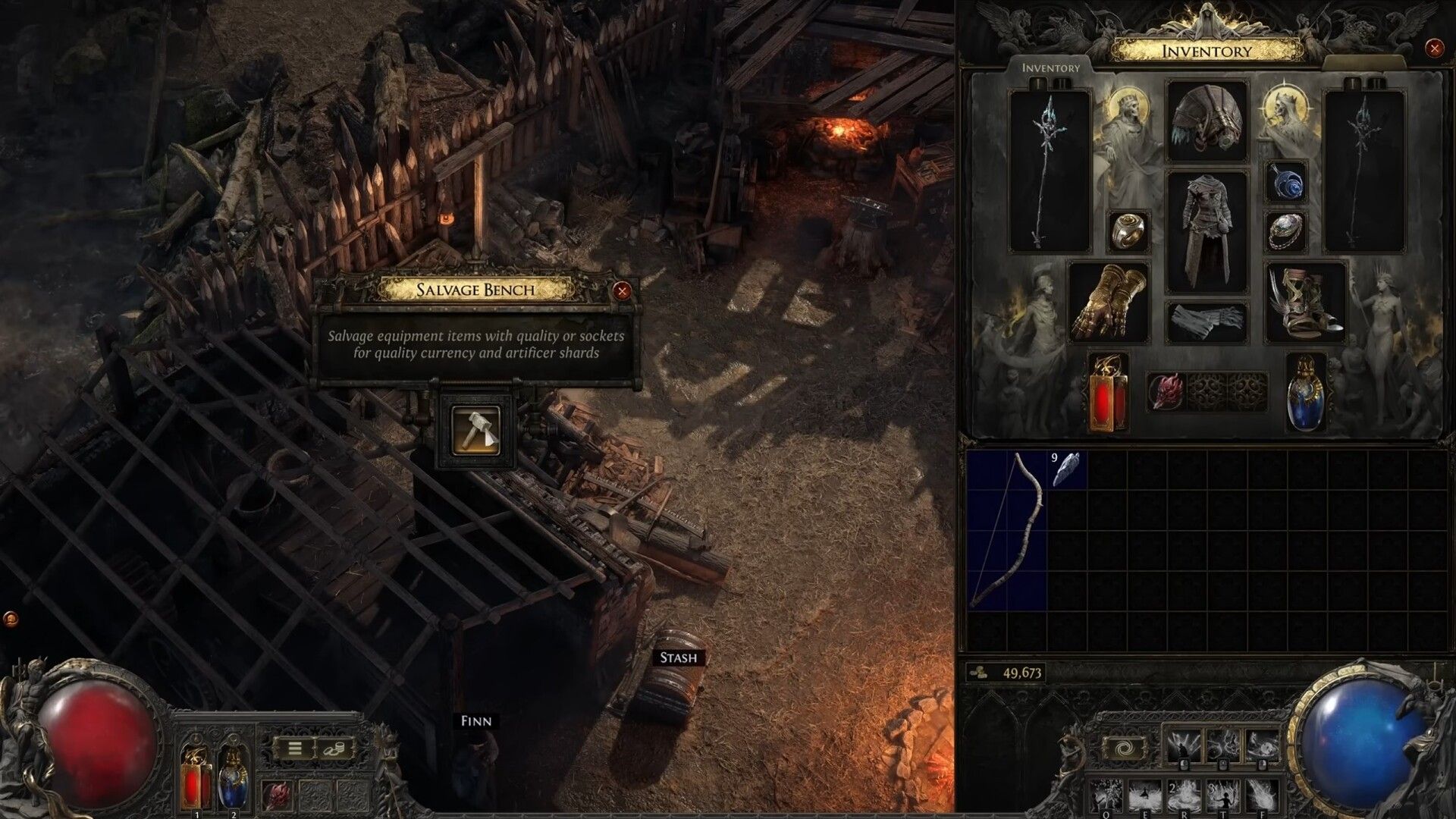
For a detailed breakdown of each crafting and upgrade item and its uses, be sure to check out our Currency and Crafting page:
Currency and Crafting GuideChoosing the Right Upgrade Material
Upgrading your gear in Path of Exile 2 can be overwhelming with so many orbs and currencies available. Because of this, we have created a breakdown of the best way to use each orb depending on your item’s current state and your progression stage.
- Starting with Normal (White) Items
When you have a base item with good stats, start with these:- Orb of Transmutation: Turns a Normal item into a Magic item. Use this first if you are early in the game and just want a basic stat boost.
- Essences: If you want to guarantee a specific stat (e.g., increased life or elemental resistances), use an Essence instead of an Orb of Transmutation. This is more reliable for targeting certain modifiers. Keep in mind, though, that Essences are mostly used in the endgame because they usually drop from the Atlas of Worlds (but can also be added through Precursor Tablet modifiers). Essences are a bit rarer and should only be used to optimize your best items.
- Upgrading Magic (Blue) Items
Once your item is Magic, you can further enhance it with these:- Orb of Augmentation: Adds a second random modifier to a Magic item. This is great when you want an extra stat on a two-mod Magic item.
- Regal Orb: Use this if you want to convert your Magic item into a Rare item for more modifiers. But be careful, as this is better saved for Endgame or items with great Magic stats.
- Upgrading Normal Items Straight to Rare
If you want to skip the Magic tier entirely:- Orb of Alchemy: Upgrades a Normal item directly into a Rare item with multiple random modifiers. Use this if you are confident the base item is worth investing in.
- Modifying Rare (Yellow) Items
Rare items can have up to six modifiers (three prefixes and three suffixes). To fine-tune them:- Chaos Orb: Re-rolls all modifiers on a Rare item. Use this when your current mods are suboptimal but the item is still promising.
- Exalted Orb: Adds a single random modifier to a Rare item. Use sparingly, because Exalted Orbs are very rare and valuable, and should be saved for late-game crafting or top-tier items.
- Divine Orb: Re-rolls the numerical values of existing mods. Perfect for min-maxing stats on a well-rolled item.
- Improving Item Quality
Quality increases base stats like defense or damage:- Blacksmith’s Whetstone: Boosts weapon quality. Always max out quality before crafting for better results.
- Armourer’s Scrap: Improves armor quality. Do this first to get the most out of your upgrades.
- Adding Sockets
When your gear needs sockets for Runes:- Artificer’s Orb: Adds sockets to Martial Weapons and Armor. Use this early on gear pieces you plan to keep for a while.
- Corrupting Items
When you are feeling very lucky (or desperate for a potential power spike):- Vaal Orb: Corrupts the item, making it unmodifiable by traditional crafting methods. This can add powerful modifiers, but it is also a big gamble. Use this only on items you are willing to risk!
When to Use What
- Early Game (Levels 1-50):
- Use Orb of Transmutation and Orb of Augmentation for basic upgrades.
- Save your Orbs of Alchemy for good bases or high-value drops.
- Focus on building quality with Blacksmith’s Whetstone or Armourer’s Scrap.
- Mid-Game (Levels 50-80):
- Use Chaos Orbs sparingly to re-roll Rare items.
- Start experimenting with Regal Orbs if you find great Magic items.
- Endgame (Level 80+):
- Focus on high-value crafting with Exalted Orbs and Divine Orbs.
- Transition to using Essences for targeted crafting.
- Use Vaal Orbs strategically on items with strong modifiers you are willing to risk.
- Optimize quality and modifiers for every gear piece.
Trading
Trading in Path of Exile 2 is where things really open up. It is how you will get the items you cannot farm yourself and turn your junk into someone else’s treasure.
How Trading Works
There are two ways to trade:
- Player-to-Player Trading:
- Visit a hub area, find a buyer/seller, and use the trade window. Simple but manual.
- Official Trading:
- Use the public stash tab system to list items for sale.
- Buyers search for items on the trade site and whisper you in-game to negotiate.
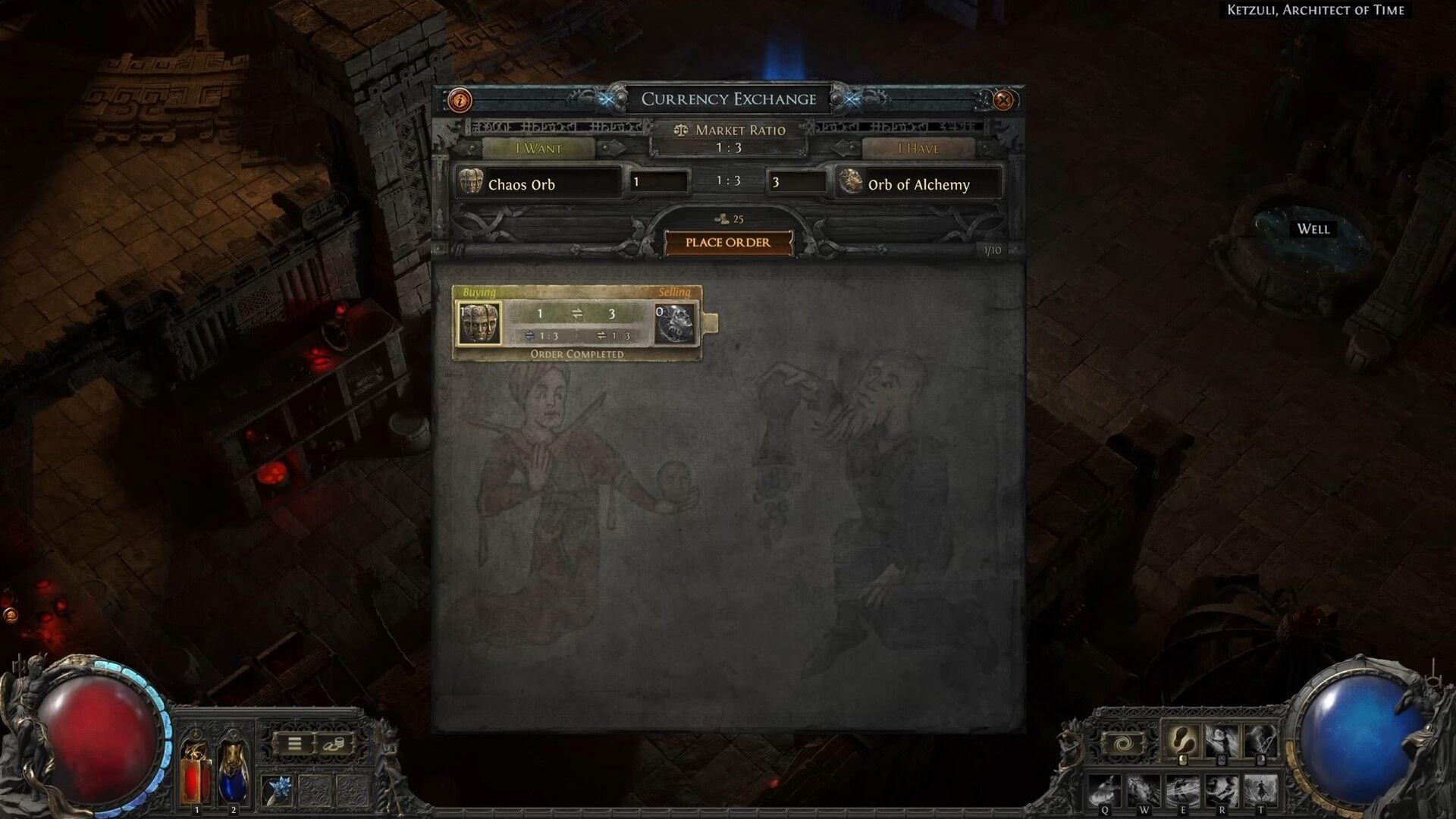
How to Set Up Public Stash Tabs
If you have never made use of this system before, here is how to set up a public stash tab for trading:
- Purchase a premium stash tab (this is required for public listings).
- Right-click the stash tab name and select “Public.”
- Use the interface to set prices for your items. You can list individual prices for specific items or use bulk pricing for multiple items of the same type.
- Once listed, other players can see your items through the official trade platform and contact you in-game to complete the trade.
When using this system, you will not need to manually advertise your items or search for buyers. Instead, the system does the heavy lifting by making your items visible to others actively searching for them.
Currency for Trading
Unlike NPC vendors, trading between players revolves around item-based currency:
- Exalted Orbs: The most common trading currency for mid-tier items.
- Chaos Orbs: Used for high-value trades.
- Divine Orbs: The highest trading currency. One Divine Orb is usually equivalent to 400 Exalted Orbs and can be used to reroll stats on gear.
Trading Tips
- Know the Market: Check prices for similar items before buying or selling.
- Organize your stash and keep frequently traded items in a public stash tab for easy access.
- Do not Rush! If something feels overpriced, it probably is. Be patient.
Additional Tips for Upgrading and Trading
In the end, upgrading and trading in Path of Exile 2 comes down to smart resource management and some strategic planning. Ideally, you should focus on valuable resources like Orbs or Essences for gear that seems promising and offers long-term value rather than items you know you will outgrow in a few levels. Furthermore, items like Omens can help you control the randomness that comes with crafting, so you can make sure to get more consistent outcomes by locking in specific prefix or suffix modifiers.
In the Atlas of Worlds, crafting maps with Waystone modifiers such as Increased Rarity of Items Found or Increased Gold Find can greatly improve both your loot quality and gold income, making every run feel much more rewarding.
Lastly, for trading, remember that hoarding currency is not always the best option. If you are farming a specific zone and accumulating items or currency, trading these for gear upgrades can often save you time and effort compared to crafting from scratch. Additionally, you should consider teaming up with friends or guildmates for farming, if that is a possibility. Working together can increase clear speed, efficiency, and loot drops quite dramatically, giving everyone in the party a boost.
 Huntress
Huntress Mercenary
Mercenary Monk
Monk Ranger
Ranger Sorceress
Sorceress Warrior
Warrior Witch
Witch
